
This is a template workflow for Creator Communities to adapt for their own needs.
- Subject:
- Open Educational Resources & Practice
- Material Type:
- Activity/Lab
- Author:
- Joanna Schimizzi
- Gwendolyn Morel
- Kylah Torre
- Michelle Singh
- Date Added:
- 06/19/2023

This is a template workflow for Creator Communities to adapt for their own needs.

This resource has the links and recordings to all of the sessions in the 2023 D2S2 Creator Communities series.
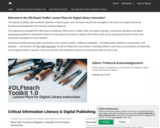
“Digital,” “library,” “pedagogy” — what happens when these three terms are brought together as the foundations of a community of practice? The strategies and insights gathered here suggest a preliminary answer to that question, but the short version might be: a lot. Digital access and affordances spark new approaches to primary sources; memes model scholarly conversation; hands-on work with APIs and web scraping quickly bring the rhetoric of the digital as seamless access to information back down to earth.
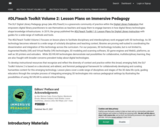
"The #DLFteach Toolkit Volume 2 focuses on lesson plans to facilitate disciplinary and interdisciplinary work engaged with 3D technology. As 3D technology becomes relevant to a wide range of scholarly disciplines and teaching context, libraries are proving well-suited to coordinating the dissemination and integration of this technology across the curriculum. For our purposes, 3D technology includes, but is not limited to, Augmented Reality (AR) and Virtual Reality (VR) technologies, 3D modeling and scanning software, 3D game engines and WebGL platforms, as well as 3D printers and extruders. While 3D/VR/AR technologies demonstrate real possibilities for collaborative, multidisciplinary learning, they are also fraught with broader concerns prevalent today about digital technologies.
To develop instructional resources that recognize and reflect the diversity of context and practice within this broad, emerging field, the DLF Toolkit Volume 2 is based on a decolonial, anti-ableist, and feminist pedagogical framework for collaboratively developing and curating humanities content for this emerging technology. Lesson plans cover a wide range of disciplines and stages of the 3D data life cycle, guiding educators through the complex process of integrating emerging 3D technologies into various pedagogical settings by illustrating the possibilities of using 3D/VR/AR to extend critical thinking."
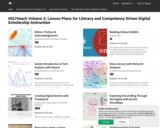
The nine lessons in this volume cover foundational digital tools like Voyant and Omeka and newer ones such as Transkribus and the International Image Interoperability Framework (IIIF). Most lessons focus on the act of making and engaging with tools, while others address misinformation and algorithmic bias. The structure and length of the lessons vary considerably, with some designed for standalone sessions and others spanning the duration of a course.

Digital Humanities Quarterly (DHQ), an open-access, peer-reviewed, digital journal covering all aspects of digital media in the humanities.

The Digital Information Literacy Hub is a curated collection of openly licensed resources that cover a wide range of topics related to digital information literacy. These topics contribute to an understanding of how to find, create, and ethically use information in the 21st century’s global information network.This document provides a quick start guide to the hub. Each collection is described to help guide users to the most appropriate content for their needs.(Banner image shared by digits.co.uk under a CC-BY-2.0 license).

The Digital Information Literacy Hub is a curated collection of openly licensed resources that cover a wide range of topics related to digital information literacy. These topics contribute to an understanding of how to find, create, and ethically use information in the 21st century’s global information network.This document contains the answers to frequently asked questions about the hub. This resource, along with the Navigation Guide and the About the Collections Guide, is intended to help the Hub’s users more effectively navigate and use the curated collections. (Banner image shared by digits.co.uk under a CC-BY-2.0 license).

An important hallmark of science is the transparency and reproducibility of scientific results. Over the last few years, internet-based technologies have emerged that allow for a representation of the scientific process that goes far beyond traditional methods and analysis descriptions. Using these often freely available tools requires a suite of skills that is not necessarily part of a curriculum in the life sciences. However, funders, journals, and policy makers increasingly require researchers to ensure complete reproducibility of their methods and analyses. To close this gap, we designed an introductory course that guides students towards a reproducible science workflow. Here, we outline the course content and possible extensions, report encountered challenges, and discuss how to integrate such a course in existing curricula.

This is a hands-on course where you will learn and demonstrate your skills in using digital technologies for collaborative OER development culminating in the development of an OER learning sequence.

This resource provides a brief introduction to driver diagrams, a tool used in design and continuous improvement to help identify and organize the key drivers or factors that influence a desired outcome or goal. It includes an editable PowerPoint slide that serves as driver diagram template and example.

Thie is the framework for a 16 week course.

Focus is on creating and selecting high quality assessments, integrating assessment practices and results into actions and planning, and building and enhancing data literacy skills related to assessment.

This resource is a template for creating and curating OER ancillary materials. This template was designed for the OER Advanced Skills series in June 2023.The English Composition OER Starter Pack is a series of original infographics and posters designed for developmental and introductory composition courses. The starter pack includes lessons on: MLA formatting, formal writing, and the parts of an academic essay. The ancillaries can be used individually, collectively, or in conjunction with a forthcoming OERTX professional learning series. The English Composition OER Starter Pack is designed for instant use; English composition instructors new to OER or higher education can download the infographics and include them in any course offerings. These lecture materials are a series of original lecture materials. It can be difficult to find basic, professional, or educational composition open educational resources designed specifically designed for higher education and adult learners. These infographics and posters are purposefully designed to meet those needs; they contain basic information presented in a clear, clean, and simple format.
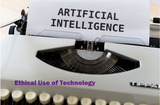
This book is the result of a co-design project in a class in the Masters of Education program at the University of Calgary. The course, and the resulting book, focus primarily on the safe and ethical use of technology in digital learning environments. The course was organized according to four topics based on Farrow’s (2016) Framework for the Ethics of Open Education and discusses Artificial Intelligence (AI) , social networking services (SNS), 3D printing, resource sharing, adaptive learning systems, STEM, assistive technologies, admissions, and communications. In each of the nine chapters, the authors discuss the connection to the value of technology in education, and practical possibilities of learning technologies for inclusive, participatory, democratic, and pluralistic educational paradigms.

This resource is a template for designing a Professional Learning Series. This template was designed for the OER Advanced Skills series in June 2023.Image generated using OpenArt and prompting generated by ChatGPT4 as a guide. Prompt fine-tuning was done by Clayton Heberling (Original Author).

This resource is a template for designing a faculty professional development series to help faculty apply best practices for licensing, curating, and organizing OER to be presented in a student-friendly environment. This version incles the lesson plans for the Session 1: Licenses, Attirbutions and Organization.All six lesson plans will be completed by Sept 2023. The plans may be copies to PowerPoint Slides or uses for handouts during the sessions.

This resource provides a brief introduction to the fishbone diagram, a tool used in design and continuous improvement to identify and explore the possible causes of a problem or an outcome.
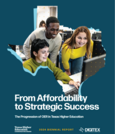
This report presents the results from the third biennial Texas OER Landscape Survey, administered in 2023 and commissioned by the Digital Higher Education Consortium of Texas (DigiTex) and the Texas Higher Education Coordinating Board (THECB). The survey aimed to explore the open educational resources (OER) landscape, policies, and practices at 169 higher education institutions, including 11 health-related institutions, across the state.
The 2023 Texas OER Landscape Survey revealed an OER landscape marked by institutional commitment, diverse adoption goals, and the instrumental role of OER champions on campus. This report not only highlights areas for improvement but also underscores the necessity of ongoing collaboration and faculty support. The trajectory observed in OER adoption is institutionally driven, placing a growing emphasis on student learning impacts and resource quality alongside financial considerations. As librarians and other key stakeholders play pivotal roles, the landscape unfolds organically, showcasing the self-sufficiency of institutions in advancing OER use and development to reach their goals for student success.
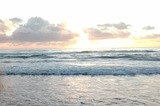
"Global Climate Change through Geologic Time" is a remix with enhancements that fits within content I implement with my students called the "Global Change Modern and Paleo Considerations" module, for example. My adopted then adapted expanded item is an extension of earlier modular activities I designed to do with students including How Science Works from Howard Hughes Medical Institute (HHMI) and using the HHMI Earth Explorer interactive to consider data trends through time that my classes do earlier in a semester. There is also a series of embedded, supporting ADA Compliant streaming videos used and I also include engagement through the UCMP Understanding Science interactive platform.